Yoga meditation is a result of two distinct fields that aim at helping humans bring out their best selves through stress release and awareness.
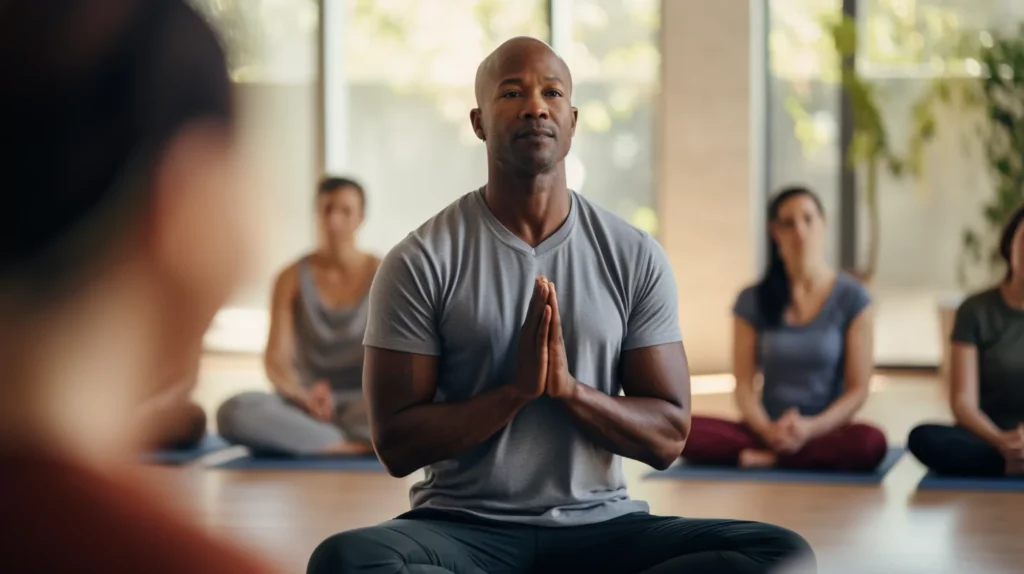
Let’s look at them separately for a bit. On one hand, you have Yoga. Yoga is a form of exercise. A more subtle form of exercise that focuses on relieving stress, enhancing sleep, and many more.
Meditation on the other hand is a spiritual exercise. They are both exercises but the difference is the planes they exist. One is physical while the other is spiritual.
While Yoga focuses on relieving the body, meditation works on the mind by progressively perfecting the soul.
Therefore, Yoga meditation is a combined practice of the physical postures and breathing techniques of Yoga and the mind relaxation, mental focus, and spiritual enlightenment of meditation.
There didn’t have to be a combination of both fields. The similarities between them necessitated such a partnership. Yoga meditation is focused on developing self-awareness, spiritual growth, mental toughness, and inner peace.
Let me take you deeper. Did you know that Yoga meditation started in India? That shouldn’t be a surprise. They cultivated various techniques that can help quiet one’s mind and build spiritual connections.
Before you might think such exercises are more “spiritually oriented”, but here’s where Yoga comes in.
At that beautiful point of spiritual connection, humans take such physical positions that work the body. You know the usual yoga sitting position, right?
It works on the joint around the legs and stretches you. You can call Yoga meditation a double bonanza.
Related: 10 Treatment Options for Depression
More On Yoga Meditation
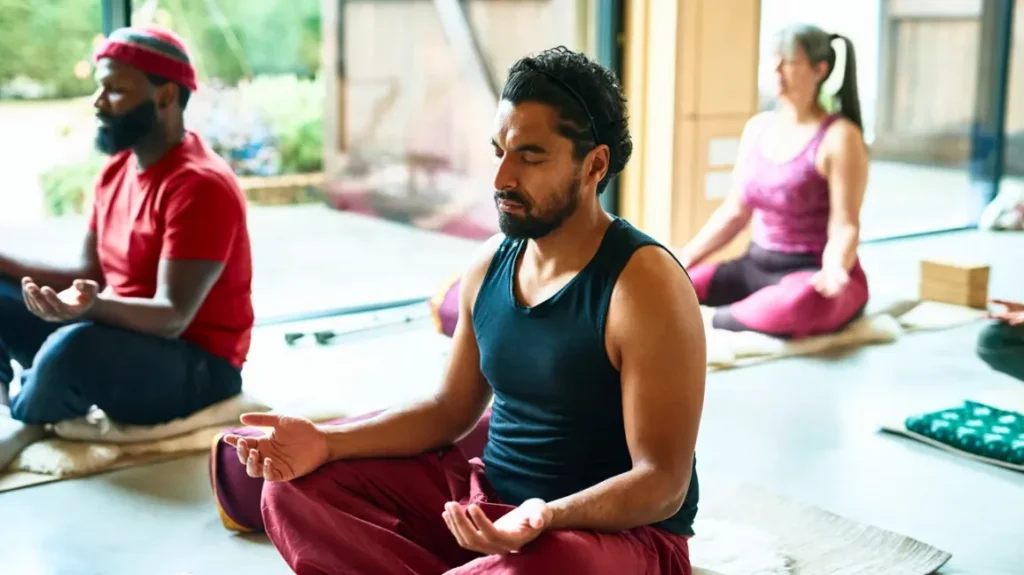
Others might argue that Yoga meditation is a tautology. The word “Yoga” itself means “Union”. That is the union of body, mind, and spirit. This is achieved through consistent practice.
Well, that’s that on that (haha).
For spiritual connection or making your body a good hotspot, you have to prepare your vessel. Yoga meditation uses certain physical postures to prepare the body. These physical postures are also called “asanas”.
Examples of these postures include;
1. Downward Dog

2. Child’s Pose
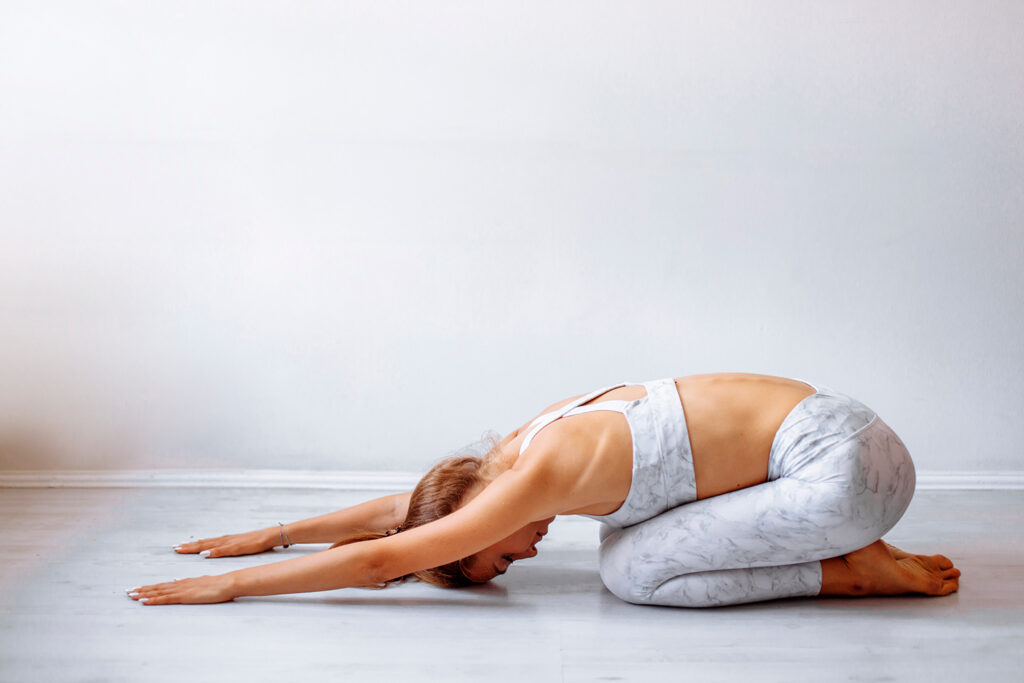
3. Lotus Pose
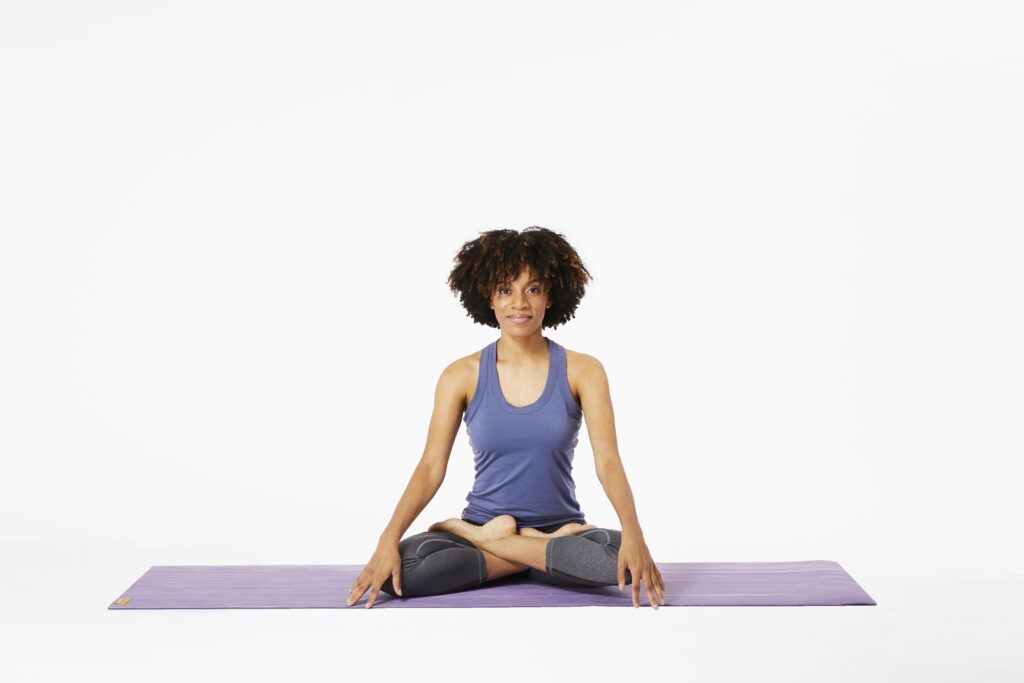
These postures help improve flexibility, strength, and circulation, creating a conducive environment for mental focus and relaxation.
Another important aspect of Yoga meditation is Pranayama. It is known as breath control. Have you heard that saying, breath is life? Nah, I coined it.
Breath control is a key part of Yoga meditation. It helps to regulate your breath’s pace and calm the mind. So when you hear, “breath in, breath out, longer, hold”, it’s all for your good.
A key aspect to consider is the foundation on which yoga meditation is built. It is deeply rooted in spiritual and philosophical traditions. You can trace it back to Buddhism and Hinduism.
It houses the “Trinity”, self-awareness, self-realization and interconnectedness of most beings on earth. The goal is all, though.
In self-awareness, you will build how mindful you become. Some techniques to help build this include;
- Body scanning
- Breath awareness (Focus on your breathing. How each air leaves your nostrils and another goes in).
- Loving-kindness meditation
Lastly, Yoga meditation helps build your concentration and focus. Concentration is a key component of yoga meditation. It builds the ability to focus the mind on a single detail.
From all indications, This is a helpful process. Integrating it into your daily life would benefit you and the people who come in contact with you.
In Martin Luther’s famous Loving Your Enemies speech, you can see his advice to always look inward. That’s what Yoga meditation helps achieve.
Related: 10 Good Habits To Develop To Have A Meaningful And Successful Life
Brief History Of Yoga Meditation
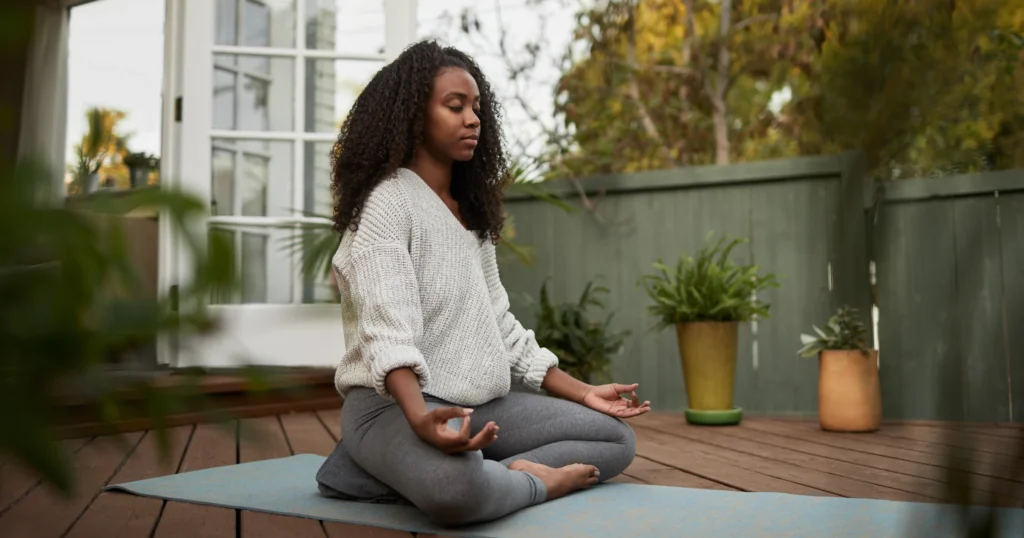
Can we settle on one particular history for Yoga meditation? No, I’m not sure about that. The word itself being coined from two separate histories would have many links to the past.
The history spans thousands of years. One thing is sure though. It originated in India. Let’s take a look at some of the traces of Yoga meditation.
1. Prehistoric Origins
If something is prehistoric, does it mean it’s beyond history? That’s by the way though.
You can date back the practice to so long ago. In those times, there was a focus on meditation, spiritual rites, shamanic practices, and ritualistic movement.
We’ve come leaps and bounds since then.
2. Vedic Period (1500–500 BCE)
Vedas is the earliest written records of yoga can be found in the ancient Indian scriptures.
Yoga practices during this period were primarily focused on rituals, sacrifices, and ceremonies aimed at connecting with divine forces and achieving spiritual liberation.
3. Upanishadic Period (800–200 BCE)
Now, we are leaving the ritualistic periods. We can now focus on the enlightened use of Yoga.
The Upanishad’s philosophical texts explored the nature of reality and the self. This laid the groundwork for the development of classical yoga philosophy.
4. Classical Yoga (200 BCE–200 CE)
Now, this is where the emergence of yoga began to gain ground. You can find some of the Yoga practices outlined in texts such as the Yoga Sutras of Patanjali.
This book writes in codes important principles such as; the eight limbs of yoga. This encompasses ethical guidelines, physical postures, breath control, meditation, and contemplation
5. Post-Classical Period (500–1500 CE)
Here, Yoga began to expand into various schools and aspects. Some of these aspects include;
Tantra Yoga
Tantra yoga incorporates mantras, rituals, and incredibly energetic practices into their meditation.
Bhakti Yoga
This type is more related to love for the divine or devotion.
lastly;
Karma Yoga
Here, the focus is selfless action and service.
6. Modern Revival (19th–20th Century)
The resurgence of Yoga happened in the closing 19th and 20th centuries.
All thanks to the unfailing efforts of Indian yogis such as Swami Vivekananda and T. Krishnamacharya, who popularized yoga as a holistic system for physical, mental, and spiritual well-being.
7. Global Spread and Contemporary Practices
Yoga gained widespread popularity in the West during the 20th century, particularly after influential figures like Paramahansa Yogananda, B.K.S. Iyengar, and Swami Satchidananda introduced various styles of yoga to Western audiences.
Today, yoga meditation is practised by millions of people worldwide, both as a form of physical exercise and as a means of inner exploration, stress relief, and spiritual growth.
Yoga went through evolution before we could finally have the finished products here today. It has adapted to suit different cultural, religious, and philosophical contexts.
The core principles of self-awareness, mindfulness, and spiritual realization remain central to its practice.
Related: 11 Tips for Outdoor Running You Should Try in 2024.
How To Start Yoga Meditation
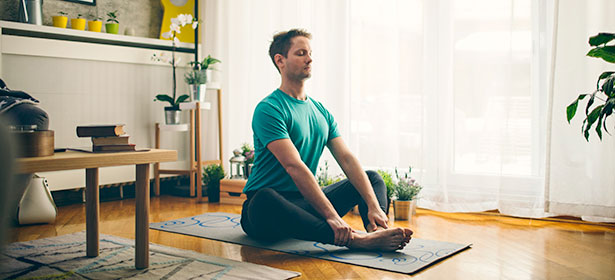
Are you still here? Nice choice, love.
Starting Yoga meditation will be a rewarding journey for us all. Yes, I’m starting too. It will help enhance our physical, mental, and spiritual well-being.
Follow this process to start yours today.
1. Set Clear Intentions
Clear intentions are important when starting Yoga meditation. You can get caught up in the practice of it and forget it’s meant for your benefit.
As the saying goes, “When use is unknown, abuse is inevitable”. If clear goals or intentions are set. You would be able to discover if you are improving in certain areas or not.
So think carefully. Is it for self-discovery, spiritual growth or mind clearance?
2. Find a Comfortable Space
Find a place with minimal to zero distractions. It could be a room in your house or even a corner where no one goes by.
This would help boost the effect of the exercise. Any distraction would ruin the entire process.
3. Get Comfortable
What position are you most comfortable in? Sitting? Laying down?
It’s your choice. The key is to find a position that allows you to relax and remain still for an extended period.
A mat or cushion would also help the process.
4. Focus on Your Breath
Pay attention to your breath. Feel as each exhale exits and each inhale comes in. If you cant feel it well, place one hand on your abdomen to feel the rise and fall with each breath.
5. Practice Mindfulness
Mindfulness would entail being in absolute control of your mind. Don’t travel in your head, remain present and feel your surroundings.
Allow thoughs to come and go without judgment.
6. Choose a Meditation Technique
There are various meditation techniques you can explore within yoga meditation, such as:
- Breath Awareness: Focus on the sensation of your breath as it enters and exits your nostrils or fills your lungs.
- Mantra Meditation: Repeat a word or phrase silently or aloud to anchor your mind and cultivate focus.
- Body Scan: systematically bring your attention to different parts of your body, noticing any tension or relaxation.
- Visualization: Imagine a peaceful scene or visualize positive experiences to evoke feelings of calm and relaxation.
7. Start With Short Sessions
Don’t be in a hurry to take long sessions. Slow and steady still wins the race. As you go higher, you can gradually increase the duration to your strength.
It’s not how far but how well.
8. Practice Regularly
Yoga meditation should be more than a one-time thing. It should be a daily routine.
Set aside time each day, preferably at the same time, to nurture your practice. Consistency is key to experiencing the benefits of meditation over time.
9. Seek Guidance if Needed
Everybody needs somebody, am i right?
There’s no right or wrong was to meditate. Ensure you follow the listed steps and you are starting an incredible journey.
Advantages and Disadvantages Of Yoga Meditation
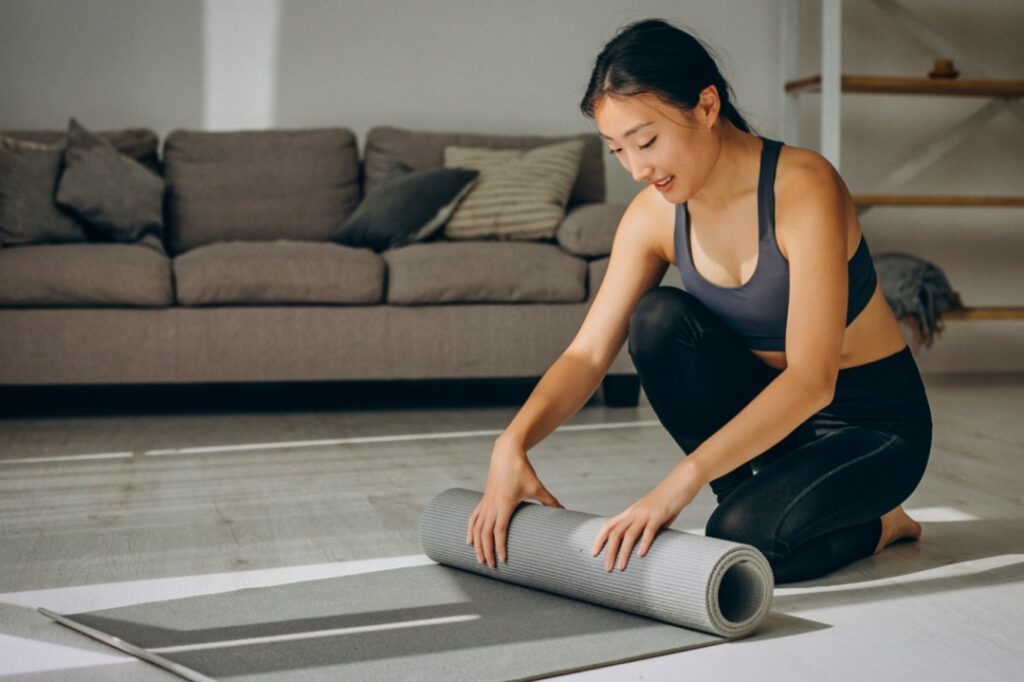
Yoga meditation has numerous advantages that contribute to overall well-being:
- Stress Reduction: Yoga meditation promotes relaxation and mindfulness, helping to lower stress levels.
- Improved Mental Health: Regular practice enhances mental clarity, focus, and emotional well-being.
- Physical Benefits: It improves flexibility, strength, and posture, leading to better physical health.
- Better Sleep: Practicing before bed can promote better sleep quality and help with insomnia.
- Enhanced Self-awareness: It deepens the connection with oneself, fostering personal growth and development.
However, it’s important to consider potential drawbacks:
- Time Commitment: Consistency and time allocation can be challenging for busy schedules.
- Initial Difficulty: Quieting the mind and focusing during meditation may be challenging at first.
- Physical Limitations: Certain poses or techniques may not be suitable for everyone, especially those with physical limitations or injuries.
- Spiritual Confusion: The spiritual aspect may conflict with personal beliefs, causing confusion or discomfort.
- Dependency: Relying solely on meditation as a coping mechanism may hinder addressing underlying issues.
The benefits of yoga meditation often outweigh the challenges, leading to improved well-being. It’s important to find a practice that suits individual needs and preferences
Don’t Go Yet
- 10 Effective Outdoor HIIT Workouts: Transform Your Fitness
- What is Mixed Wrestling (See 8 Rules Guiding The Sport)
What’s Left to Say
Yoga meditation aims at the revitalization of human body and spirit. It brings you in touch with your environment and surroundings. It has been acclaimed as potent, so, show no fear.
Whether Yoga or meditation, start one today.
